#jatamansi
Photo

Arborist (eau de parfum)
Progressive Botany Vol. I
Jorum Studio
Woods
The Green Man - a study of humanity’s visceral and tempestuous relationship with nature.
Arborist is an ode to enchanting woodlands, the likes of which are found across our native Scotland.
Be warned, Arborist is not just lumber. It is an imagined day-in-the-life of a Virideer.
Arborist possesses an overwhelming and spirited opening mellowing into sun-bleached woods, malted cereals and worked-skin. A symphony of nature untamed.
The core structure of Arborist is redolent of many great Scots timbers; their leaves, flowers, fruits, roots and soil being the quintessential portrait of the forest.
Arborist presents a unique blend of raw flowers, botanicals, resin sap, underwood and surprising forest fruits. Resolutely sylvan and intriguingly multifaceted with more than a hint of human skin, oily tool and distilling elixirs haunting from afar.
Top notes: Quince, Honey, Saffron, Osmanthus, Magnolia, Burdock
Base notes: Papyrus, Mugwort, Rose, Tuberose, Myrrh, Spruce resin, Douglas fir, Labdanum, Jatamansi, Malt, Lichen
#jorum studio#eau de parfum#jorum studio progressive botany vol i#woods#quince#honey#saffron#osmanthus#magnolia#burdock#papyrus#mugwort#rose#tuberose#myrrh#spruce resin#douglas fir#labdanum#jatamansi#malt#lichen
4 notes
·
View notes
Text

Unveiling the essence of tranquility with Jatamansi (Reconstitution). Derived from the Himalayas, this flowering plant introduces you to the aromatic spikenard oil – a fragrant journey through ancient traditions.
For more details, visit -https://www.bmvfragrances.com/productcategory/jatamansi-reconstitution
0 notes
Text
When wild plants species are not sourced or used sustainably, it may threatens biodiversity.
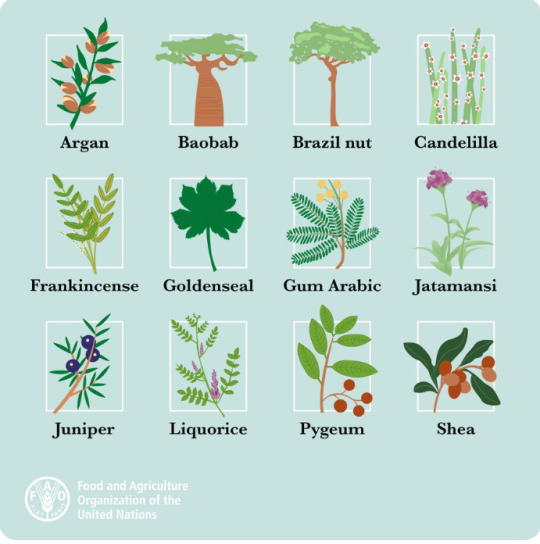
About 50 000 wild species are used for food, energy, medicine, material & other purposes. This includes many plants. But often these plants are not sourced or used sustainably, which threatens biodiversity.
How FAO is protecting them?
#biodiversity#FAO#native plants#wild species#juniper#liquorice#pygeum#shea#jatamansi#gum arabic#goldenseal#frankincense#candelilla#brazil nuts#baobab#baobao#argan
0 notes
Text
Jatamansi Benefits

1. Enhances Brain Function
Jatamansi is renowned for its ability to enhance brain function and support cognitive health. The herb contains potent antioxidants and neuroprotective compounds that help combat oxidative stress and free radical damage in the brain. Regular consumption of Jatamansi has been linked to improved memory, concentration, and mental clarity, making it an excellent natural remedy for those seeking to boost their cognitive abilities.
2. Promotes Better Sleep
One of the most cherished benefits of Jatamansi is its calming and soothing effect on the nervous system. The herb acts as a natural sedative, helping individuals struggling with sleep disorders, such as insomnia or restless nights, to attain a more restful and deep sleep. Incorporating Jatamansi into your bedtime routine can significantly improve the quality of your sleep, leaving you feeling refreshed and revitalized in the morning.
3. Supports Hair Growth
The herb possesses potent hair-nourishing compounds that strengthen hair follicles, prevent hair fall, and improve overall scalp health. Regular use of Jatamansi-infused hair products or oils can lead to lustrous and voluminous hair.
4. Reverses Premature Greying of Hair
Premature greying of hair is a common concern for many individuals. Jatamansi offers a natural solution to combat this issue. Its nourishing properties help restore the natural color of the hair and prevent further greying, enabling you to maintain a youthful appearance.
read more
0 notes
Text
amateur girlfriend fantasizing and real fuck
pakistani married wife gangbang
Mais um da casada novinha de santo amaro puta
Straight thug go gay and latin guys porn Dude With Dick Piercing gets
Pussy dildo milf
Lucie Wilde gets her Huge tits and tight pussy Banged till she pops!
Dedeando a Deadpool
Milf anally rides cock
Erotic Massage With Indian Babe
HOT MILF Fucked By Her Stepson
#Ismael#artfight#homochromatism#uncontributive#goldenfleece#squirrelled#crowded#proscutellum#chuva#rose-eared#Philipsburg#fibroma#veloce#jatamansi#Valentino#Kliment#tardier#decolorizer#overpitched#occupants
0 notes
Text
Adhatoda Vasica - Boswellia Serrata Dry Extract | Omkar Herbals
Herbal Products are the best, they have no side effects on users body or health. They work like magic, whether it is medicine, extracts or Vegetable Powders, each of them shows positive results in the long run. This is why, we, Omkar Herbals, promotes such chemical free solution to clients all across the globe. We proudly offer our clients with top quality Herbal Products comprising a range of Anti Diabetic Tea, Herbal Teas, Herbal Extracts, Vegetable Powders, etc. that is good for human health. Our popular products like Acacia Concinna Dry Extract, Adhatoda Vasica Dry Extract, Lemon Powder, Pomegranate Powder, Anti Heart-Attack Tea, etc. are just few of the finest example of excellence in the market. They are highly effective.
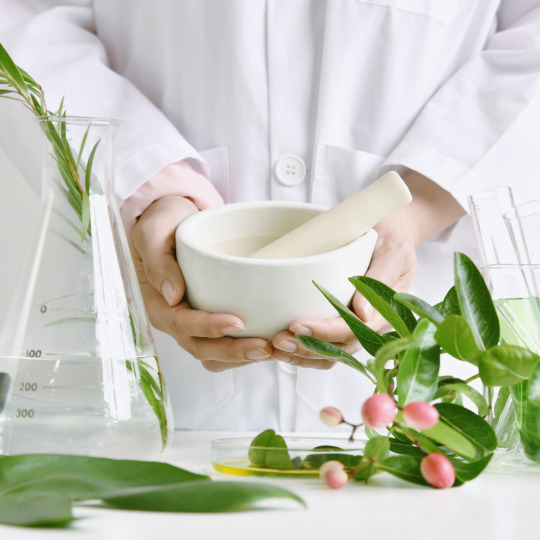
#Adhatoda vasica Dry Extract#Boswellia serrata Dry Extract#Emblica officinalis Dry Extract#Leptadenia reticulata Dry Extract#Nardostachys jatamansi Dry Extract#Phyllanthus niruri Dry Extract#Quercus infectoria Dry Extract
0 notes
Text


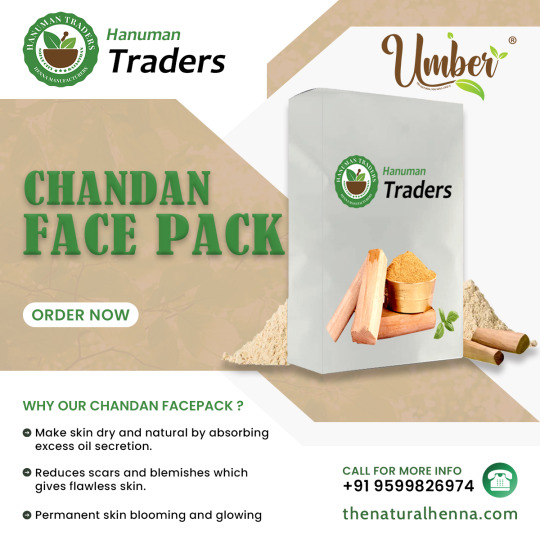


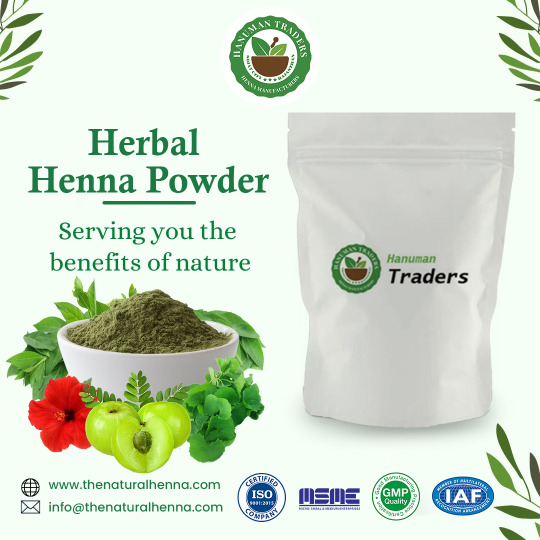

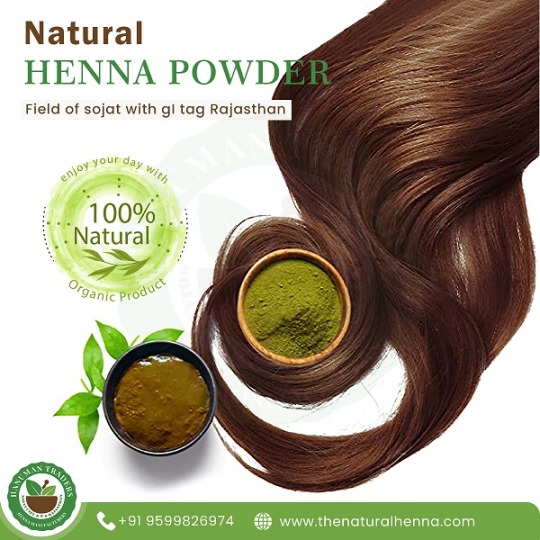


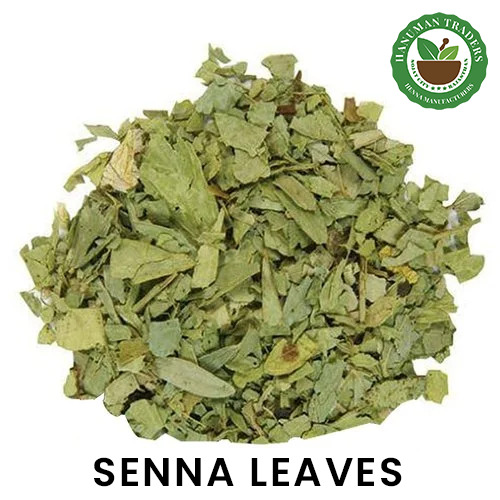
Hanuman traders is best natural henna powder manufacturer and exporter in India ,we serve from last 8 years, we provide organic natural henna powder.
Contact us on 9599826974 or [email protected].
#henna powder manufacturer#henna powder supplier#amla powder supplier#aritha powder manufacturer#baq henna powder#herbal henna powder#indigo powder manufacturer#jatamansi powder#neem powder manufacturer#tulsi powder manufacturer#shikakai
0 notes
Text
L'Eau de Jatamansi (L'Artisan Parfumeur)
You would think a fragrance containing the fabled ingredient spikenard (Nardostachys jatamansi) would stick around as long on skin as it has in human memory. After all, spikenard is a member of the Valerianaceae tribe of plants, the most prominent member of which is (natch) valerian-- a tall plant with showy pink blossoms and roots that reek to high heaven, which explains its nickname according to the Greeks: phu.
Spikenard is similar to valerian in structure and appearance, but instead of a foetid stink, it produces the approximate scent of paradise. Musician, artist, and amateur perfumer Brian Eno cited his first encounter with this transcendent fragrance as a significant moment in his love affair with scent. "(A) woman I met in Ibiza gave me a minute bottle containing just one drop of an utterly heavenly material called nardo…" he once wrote; even in eight-point magazine typeface, his awe and gratitude were evident.
Long used in traditional Chinese and Ayurvedic medicine as a remedy for persistent pain and grief, spikenard has also been identified as the "costly oil" with which Mary Magdalene anointed Christ as he rested in the house of Lazarus. According to the Gospel, Judas Iscariot argued that the perfume (being "of great price") could have been sold, and the funds distributed amongst the poor. At that time, one pound of pure oil of nard cost roughly 300 silver denarii. To put this price into perspective, one denarius represented a single day's wages for the common Roman soldier. Mary Magdalen therefore blew the equivalent of a healthy trust fund on a single vessel of perfume. Needless to say, this makes me feel a whole lot better about my own fragrance budget.
If you manage to find any quantity of the now-discontinued L'Eau de Jatamansi by L'Artisan Parfumeur, it might set you back as much as Mary Magdalen's scent du jour. Your wad of cash would get you a product containing only natural essential oils from certified organic sources-- no synthetics. But you'd also be paying through the nose (pun intended) for an eau de toilette whose scent life is shockingly brief, requiring frequent reapplications to keep it alive on skin. As extravagantly as you're meant to splash it on, you eventually might find that it has cost you the modern equivalent of 300 denarii.
Worth it? That first splash will decide you.
L'Eau de Jatamansi kicks off with a wonderful top note of spikenard and black pepper which segues into the scent of fresh carnations -- not the boutonniere variety, whose fragrance has given up the ghost in some florist's refrigerator case, but the tiny "pinks" that grow half-wild in tangled garden beds. When warmed by the sun, these blossoms send up a piquant odor that is a perfect triangulation between raw celery, powdered cloves, and dimestore candy hearts.
Sadly, this lovely phase is tragically cut short by an overpunctual drydown reminiscent of old-fashioned perfumed bath powder, which comes as a dry surprise after Jatamansi's juicy green heart. And just as you're coming to terms with it, even the drydown fades too soon-- does nothing about this perfume want to stick around?
If perfumer Karine Vinchon ever revisited her creation and rectified the persistence problem, and if L'Artisan ever re-released it as an EDP "extrême", sure. I'd try it. But buy it? For my reluctance to fully commit to so fickle a scent -- regardless of how breathtakingly lovely -- I hope, like Mary Magdalene, to be forgiven.
Scent Elements: Himalayan nard, grapefruit, bergamot, clary sage, tea, Turkish rose, ylang-ylang, cardamom, saintwood, sandalwood, patchouli, vetiver, balm, incense, papyrus
1 note
·
View note
Text
onion hair oil for hair growth
Biofaith onion hair oil for hair growth with the best ingredients like Black Seed & Jatamansi which helps to stop hair fall and improve hair growth and remove dandruff.


#onion black seed oil#best onion hair oil for hair growth#jatamansi oil for hair growth#jatamansi hair oil#onion hair oil#onion hair oil for hair growth#black seed oil
1 note
·
View note
Text
DNA METHYLATION STATUS IN LEAF, ROOT AND RHIZOME OF Valeriana jatamansi | Journal of Global Agriculture and Ecology
In plants, DNA methylation, an important epigenetic mark, is recognised to have a crucial function in regulating gene expression. It's also known to be a crucial regulator for a variety of processes in many tissues. Using a methylation sensitive amplification polymorphism (MSAP) technique, variations in DNA methylation pattern of CCGG sites were examined in leaf, root, and rhizome tissues of Valeriana jatamansi, a medicinally significant plant. DNA polymorphism in terms of methylation was assessed using a combination of eight selective MSAP primers. There was a significant shift in MSAP profiles of genomic DNA of this medicinally essential plant. The root (16.82%) has the highest methylation, followed by the rhizome (15.48%) and the leaf (12.37%) tissues. The sequences of five methylation-altering MSAP segments that were differentially amplified were successfully retrieved. In these three tissues, there were more than 15 MSAP band variations. Only two differentially amplified MSAP fragments were sequenced and identified using BLAST analysis in leaf tissue (LM-1 and LM-2) and root tissue (RM-1 and RM-2). In rhizome tissue, one differently amplified MSAP fragment (RHM-1) was characterised. The findings show that different MSAP fragments in different tissues may be responsible for Valeriana jatamansi's physiological response control.
Please see the link :- https://www.ikprress.org/index.php/JOGAE/article/view/617
0 notes
Text
Hmm:

Regarding tenzu tablets:
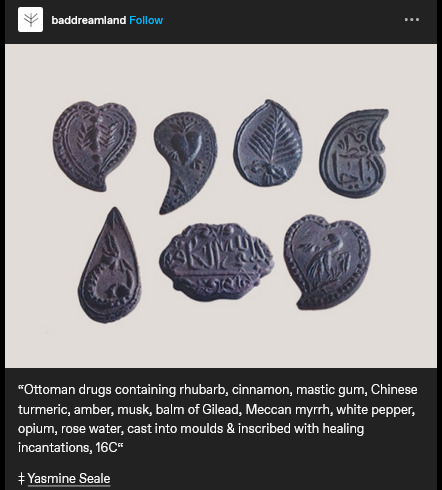
Caption reads: "Ottoman drugs containing rhubarb, cinnamon, mastic gum, Chinese tumeric, amber, musk, balm of Gilead, Meccan myrrh, white pepper, opium, rose water, cast into moulds & inscribed with healing incantations, 16C". Credited with a link to Yasmine Seale, on social media.
Original linked source doesn't mention where these particular tablets/molds were created, kept, displayed, etc. But I wanted to learn more and found a kinda recent summary of tenzu which was published by Nil Sarı (head of History of Medicine and Ethics Department at Istanbul University's Cerrahpasha medical school, president of Health History and Museology Association), which was presented at a conference in 2016:
Nil Sarı. "The Special Pharmaceutical Tablet “Tenzu” in Ottoman Medicine.” 7th International Congress for History of Islamic Medicine, October 24-28, Fez, Morocco, 2016: 24-28.
An excerpt of the text:
In Ottoman Turkish tenzu (tensuh) means "very rare beautiful thing" or "a box containing a variety of fragrances." Tenzu was also said to be the name of a place in Hitay (Eastern Turkistan / Xinjiang) where a medicinal clay - the main ingredient of the tablet tenzu - was imported from. Tenzu was a kind of theriac said to be effective against various ailments. Different tenzu prescriptions are noted in the texts [...] of several medical manuscripts of the 17th and 18th centuries. These tenzu prescriptions were described by various physicians, e.g. the head physicians Salih bin Nasrullah and Nuh Efendi as well as Hayatizade Mustafa Feyzi and Shaban Shifai who were palace physicians of the period. The special pharmaceutical tablet/pastille named "tenzu kursu" was formed in various shapes, i.e. oval, round, or rectangular. A measured amount of the drug preparation was compressed and shaped in a special brass mold named "tenzu kalibi" in Turkish. [...]
Prayers and ornamentations are engraved on the metal molds [...]. The expressions Deva al kulub (Drug for the heart) and Shifa al marghoob (The desired, yearned healing) inscribed on molds reinforce spirituality. [...] Inscriptions around the center of the other flower shaped pattern are Ferd, Hayy, Kayyum and feehi shifaun lin-naas (wherein is healing for mankind, Surah an-Nahl, verse 69). [...] Al-Hayy and Al-Qayyum are often used together. Al-Hayy signifies "ever-lasting life", and Al-Qayyum "self-existing life". [...] Sihhat bad (Have a good health) and Afiyet bad (Have a good appetite) are inscribed. [...] A. Suheyl Unver and Hayri Sozen published several tenzu prescriptions in their book "Turk Farmakaloji Tarihi I.", in 1960. [...] Tenzu prescriptions are found in several medical manuscripts kept in the Topkapi Palace Library, Suleymaniye Library and Istanbul University Rare Books Library.
Clay is a main ingredient [...]. Tiyn-i Tenzu is an unknown red colored clay. However, Terra Sigillata (Tiyn-i mahtum / muhurlu toprak) and Armenian Clay (Kil ermeni) are found in the prescriptions. [...] There are also animal products in the compositions, i.e. ambergris (amber), bezoar (badzehr), kermes (kirmiz), musk (misk), raw silk (harir-i ham / ham ipek), [...] and burnt deer antler (yanmisgeyik boynuzu). There are a wide variety of herbal drugs in the compositions, i.e. Acorus calamus [...], Aloe vera (Sabir), [...] Anchusa offinalis (Lisan-i sevr cicegi), Artemisia absinthium [...], Bambusa arundinaceae [...], Chenopodium album [...], Cinnamon (Darcin), Citrus aurantium [...], Crocus sativus (Za'feran), Embellia ribes [...], Gummi mastix [...], Heliotropium arborsecens [...], Nardustachys jatamansi [...], Potentilla reptans [...], Pterocarpus santalinus [...], Red rose/Rosa gallica [...], Rheum officinale (Ravend), Rumez acetosellaseed [...], Ruta graveolens (Keci Sadefi/Sedef Otu), Terminalia citrina [...], Terminalia chebula [...], Tormentilla (Tormentila).
Shaping and storage of these drugs are explained alongside some of the tenzu prescriptions. According to a recipe, all ingredients are beaten very thin on a porphyry (onyx marble) [...]. Each dose wrapped in gold foil is anointed an amount of almond oil. It is pressed into the mold, dried in the shade and stored in wood boxes. [...] Drugs in tablet form was an old tradition. In general, the preparation is poured onto a tray. [...] After dried in the shade, orange leaves are put between them. Stored in colored glass containers, they're reused when needed, squashed with water and drunk as a syrup. Also, flat pills made of a drachma weight were retained on the tongue in the mouth [...]. Although drugs in tablet form were used throughout Ottoman history either as a pastille or to be converted into syrup, the tenzu tablet molds were designed for the Ottoman sultans and members of the dynasty to make special tablets decorated with calligraphy [...].
[End of excerpt.]
All of these images are cropped screenshots of the PDF scan of the printed "conference works"; the PDF was uploaded online by Nil Sarı.


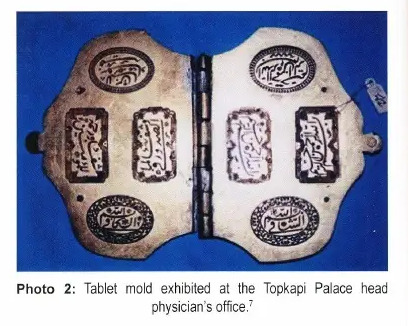

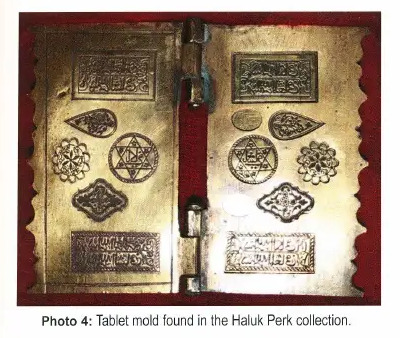
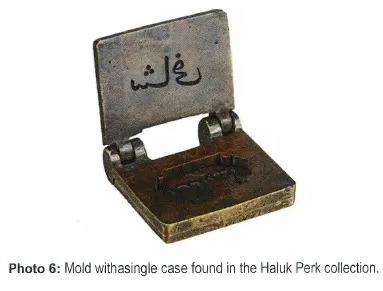
#sorry some of the non english is messed up because i had to transcribe the text myself from the image scans#also like that the Special Sweets Kitchen of the palace produced medicine
132 notes
·
View notes
Photo

Woody Mood (eau de parfum)
Olfactive Studio
Nose: Bertrand Duchaufour
Woods
Bewitching and intense, Woody Mood features strong tones that echo the immensity of the giant sequoias.
One approaches this fragrance the same way the mysterious heroine does the forest. A clearing, a hypnotic light that summons curiosity: bright notes of bergamot and ginger lead the way, then an accord of sequoia, black tea, incense, and Jatamansi (Himalayan spikenard) settles in, followed by the final enchanting notes of styrax, leather, and patchouli.
Top notes: Bergamot, Ginger, Clary sage, Saffron
Heart notes: Sequoia, Jatamansi, Black tea, Incense
Base notes: Patchouli, Styrax, Leather, Cocoa, Powder
#olfactive studio#eau de parfum#bertrand duchaufour#noble woods#bergamot#ginger#clary sage#saffron#sequoia#jatamansi#blackcurrant bud#incense#patchouli#styrax#leather#cocoa#powder
2 notes
·
View notes
Text
Imaginary Authors A City On Fire

Imaginary Authors A City On Fire
Nose: Josh Meyer
notes: burnt match, juniper, labdanum, jatamansi, cardamom, berries
A City on Fire is a realistic smoke/burning scent for a few minutes, but then it becomes much more of a woody incense (the jatamansi?) which is interesting in its own right. It’s like fragrant, scented wood, a little smoky, a little sharp with glints of citrus. It’s a rather austere monochrome theme (charcoal gray, coffee brown) but the execution is intense, high-energy, and invigorating.
4 notes
·
View notes
Text
2. It refreshes the mind and body.
Pure botanical fragrances, especially essential oils, can give us a wide range of emotional, physical, and emotional benefits. The most refreshing of the oils are the citruses, such as lemon and grapefruit, and the conifer oils such as spruce, pine, and fir.
Refreshment can also come from relaxation and deep rest, assisted by lavender, clary sage, jatamansi, and geranium.
It can come from the spices frequently used in incense-making, such as cloves, cinnamon and camphor. Sweet fragrances are particularly important for refreshment, as the Charaka Samhita of Ayurveda tells us, sweet smells maintain youth, vigor, and give a long life. A rejuvenator, they also increase sensual enjoyment.
12 notes
·
View notes
Text
Jatamansi benefits for brain: Is Jatamansi a Sedative?
What is Jatamansi?
Jatamansi, scientifically known as Nardostachys jatamansi, is a perennial herb native to the mountainous regions of the Himalayas. It has been used for centuries in traditional Ayurvedic medicine for its remarkable medicinal properties. Also referred to as "spikenard," Jatamansi is widely recognized for its numerous health benefits, especially concerning brain health and emotional well-being.

Jatamansi Benefits
1. Enhances Brain Function
Jatamansi is renowned for its ability to enhance brain function and support cognitive health. The herb contains potent antioxidants and neuroprotective compounds that help combat oxidative stress and free radical damage in the brain. Regular consumption of Jatamansi has been linked to improved memory, concentration, and mental clarity, making it an excellent natural remedy for those seeking to boost their cognitive abilities.
2. Promotes Better Sleep
One of the most cherished benefits of Jatamansi is its calming and soothing effect on the nervous system. The herb acts as a natural sedative, helping individuals struggling with sleep disorders, such as insomnia or restless nights, to attain a more restful and deep sleep. Incorporating Jatamansi into your bedtime routine can significantly improve the quality of your sleep, leaving you feeling refreshed and revitalized in the morning.
3. Supports Hair Growth
The herb possesses potent hair-nourishing compounds that
read more
0 notes
Text
Recastle Ashwa Kushal With Ashwagandha root
Recastle Ashwa Kushal with Ashwagandha root is a dietary supplement that is made with a blend of herbs, including ashwagandha root, which is one of the most well-researched herbs in Ayurvedic medicine.
The supplement is said to help reduce stress and anxiety, improve sleep quality, boost energy levels, reduce inflammation, boost the immune system, and improve memory and cognitive function.
Recastle Ashwa Kushal with Ashwagandha root is a safe and effective way to improve your overall health and well-being. It is a good choice for people who are looking for a natural way to reduce stress, improve sleep, and boost their energy levels.
Here are some of the benefits of Recastle Ashwa Kushal with Ashwagandha root:
Reduces stress and anxiety: Ashwagandha root is a powerful adaptogen, which means that it helps the body to adapt to stress. It has been shown to reduce cortisol levels, which are the stress hormones.
Improves sleep quality: Ashwagandha root can help to improve sleep quality by reducing anxiety and promoting relaxation.
Boosts energy levels: Ashwagandha root can help to boost energy levels by increasing the production of ATP, which is the body's main source of energy.
Reduces inflammation: Ashwagandha root has anti-inflammatory properties, which can help to reduce inflammation throughout the body.
Boosts the immune system: Ashwagandha root has been shown to boost the immune system by increasing the production of white blood cells.
Improves memory and cognitive function: Ashwagandha root has been shown to improve memory and cognitive function by increasing the production of brain-derived neurotrophic factor (BDNF), which is a protein that helps to protect and repair neurons.
If you are looking for a natural way to improve your overall health and well-being, Recastle Ashwa Kushal with Ashwagandha root is a good choice. It is a safe and effective way to reduce stress, improve sleep, and boost your energy levels.
Please note that this is not medical advice. If you are considering taking Recastle Ashwa Kushal with Ashwagandha root, it is important to talk to your doctor first.
Here are some of the ingredients in Recastle Ashwa Kushal with Ashwagandha root:
Ashwagandha root
Brahmi powder
Shankhpushpi powder
Jatamansi powder
Shatavari powder
Guduchi powder
Shilajit
These ingredients have all been shown to have beneficial effects on the body, and they are combined in Recastle Ashwa Kushal with Ashwagandha root to create a powerful supplement that can help you improve your overall health and well-being.
If you are interested in trying Recastle Ashwa Kushal with Ashwagandha root, you can purchase it on the Recastle website. The product is available in capsules or powder form, and it is also available in a variety of pack sizes.
2 notes
·
View notes